Escaping out of Denmark during the war
A Polish Jew’s passport used to escape to freedom.
The remarkable story of Denmark in World War II and its courageous help it gave its Jewish population is an unforgettable event of that horrific war. From all the countries in Europe, Denmark’s Jewish community suffered the least in comparison to other communities.
Though declaring neutrality at the beginning of the war, and signing the German–Danish Non-Aggression Pact in 1939, this did not save her from the wrath of Nazi Germany. The occupation began following Operation Weserübung, April 9th 1940, and ended after the German troops withdrew in 1945.
From 1940 to 1943 the lives in the country, civilian and government, were relatively calm and not with much friction with the occupiers and its leadership back in Berlin, but this would change. Following German stricter demands on controlling the population and the introduction of the death penalty for saboteurs, and the refusal of the Danish government to comply fully with these demands, the country was put into martial law with the local government dismantled.
The situation for the country’s Jewish population turned for the worse the same year: On October 1st Adolf Hitler ordered that the Jews be rounded up and deported. German diplomat Georg Ferdinand Duckwitz, stationed in Denmark, warned the local leadership and the Jewish community of this impending threat. Thanks to the resistance movement and help offered by many civilians, 99% of the Jewish community were saved (out of a total of 7,800 people 7,220 survived) and scuttled away into neutral Sweden by sea. This may be one of the biggest resistance and mass defiance of the entire war during the German occupation.
The passport here has strong connection to these events mentioned above. It was issued to a Polish Jew named Isak Karpen from Buczacz, eastern Poland. Passport number 7793/1/37 was issued at the Polish consulate in Copenhagen on 2nd July 1938, and it was signed by diplomat Boleslaw Rediger, attaché, who fled Denmark to Sweden in 1940, but died a year later. The passport was extended several times, last entry for March 11th 1940, shortly before the invasion. From the period of 1937 to 1939 he conducted several trips back to his native country, eventually marrying as well. The German visas from Copenhagen were signed by Oberinspektor Karl Preuß who was stationed in Copenhagen from 1925 to 1938.
After some research into this individual’s whereabouts, we now know that he spent some time during the war in Sweden, but no date is mentioned for his arrival into the country. He may have been on board one of those many small fishing boats that scuttled the country’s Jewish population to freedom in 1943.
Enjoy the images.
Smaller image source: Wikipedia.
Thank you for reading “Our Passports”.




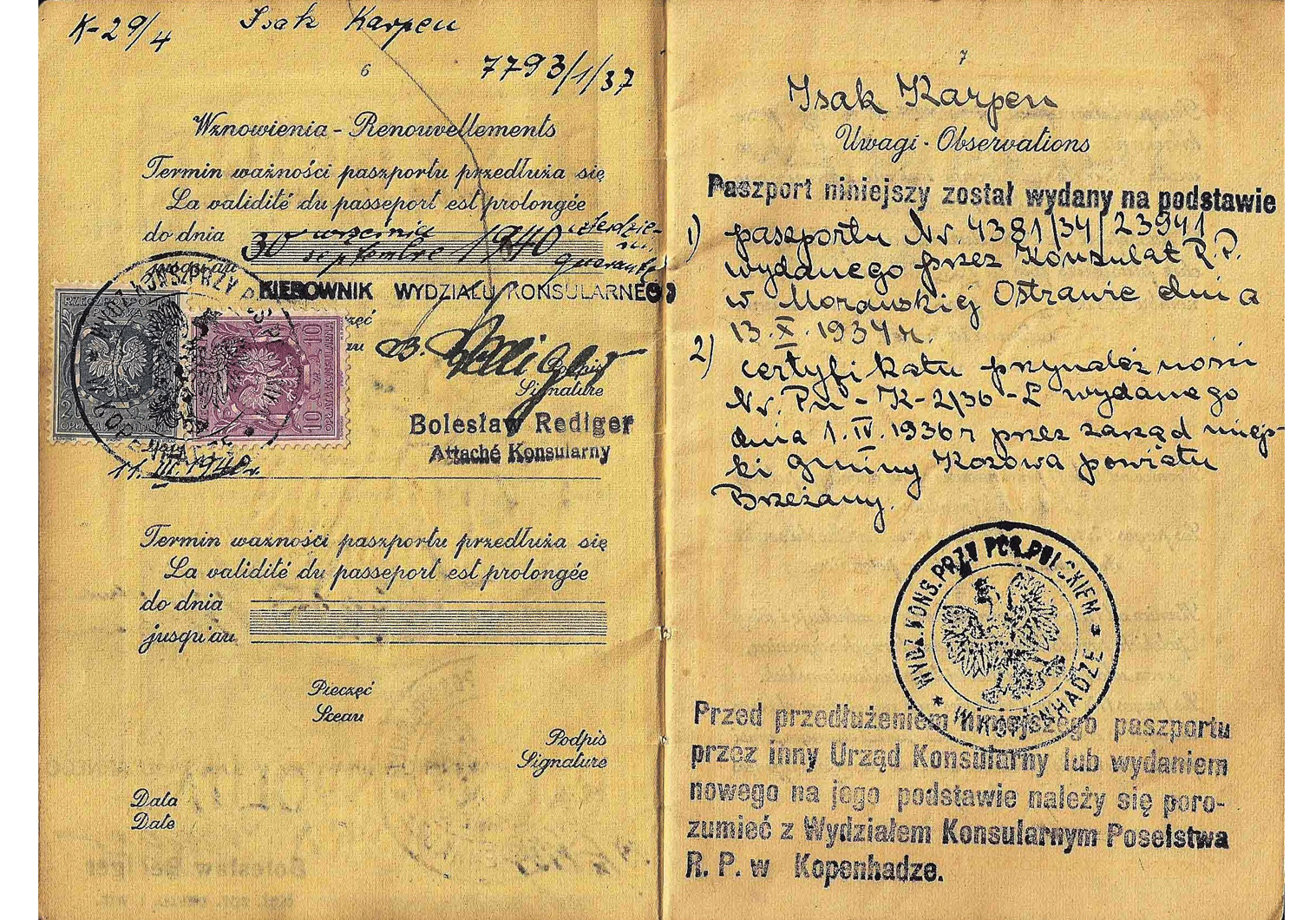
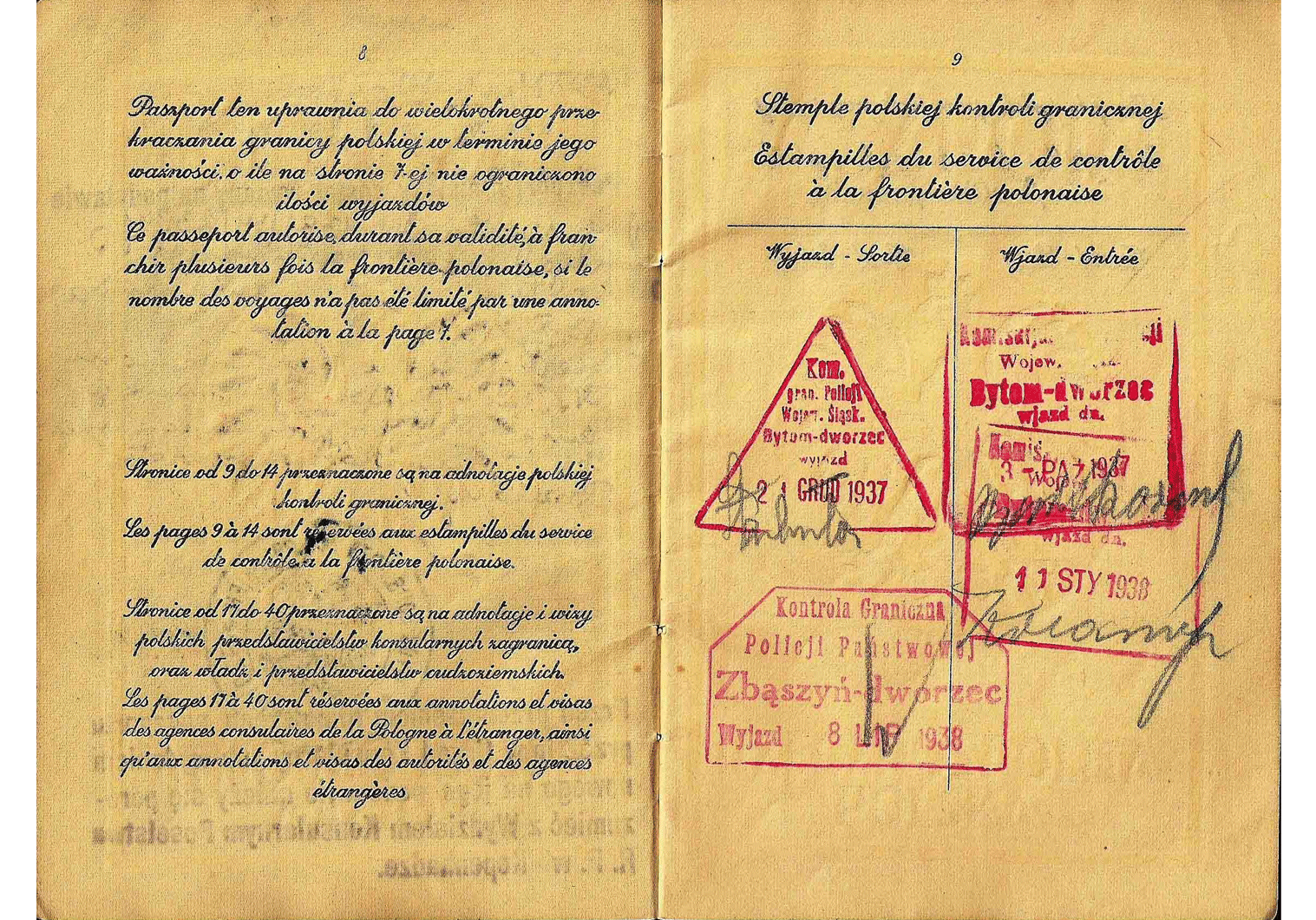

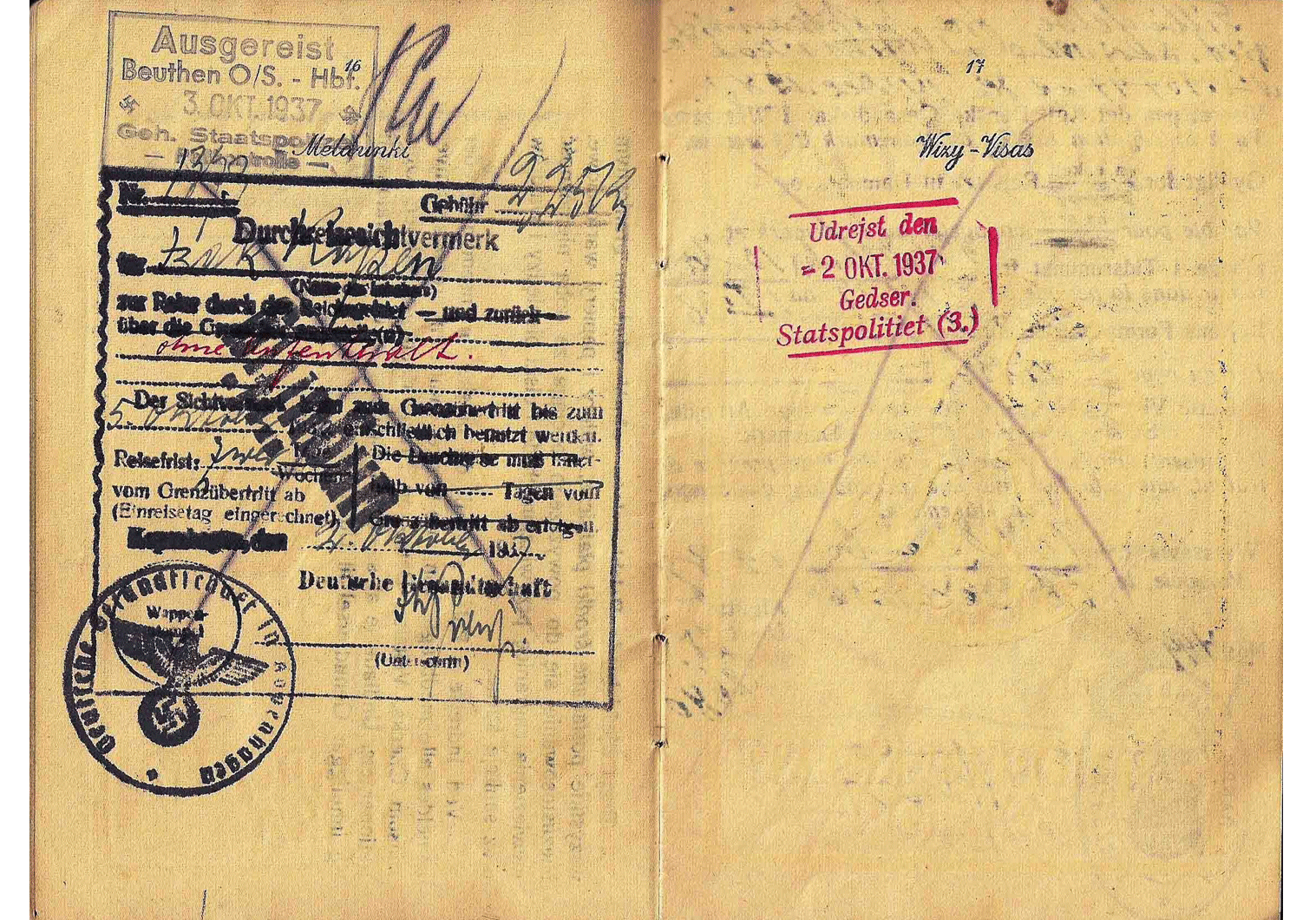
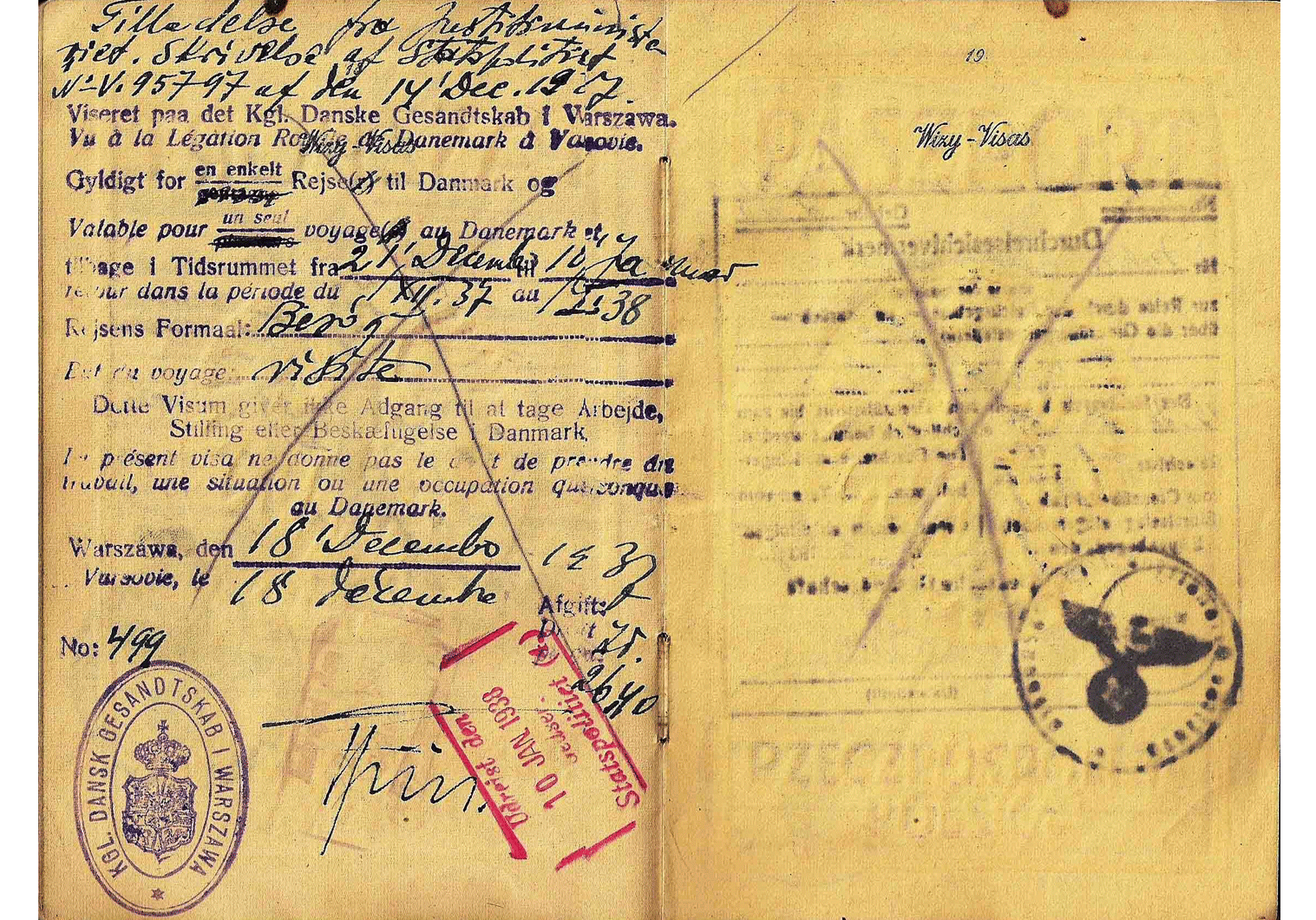

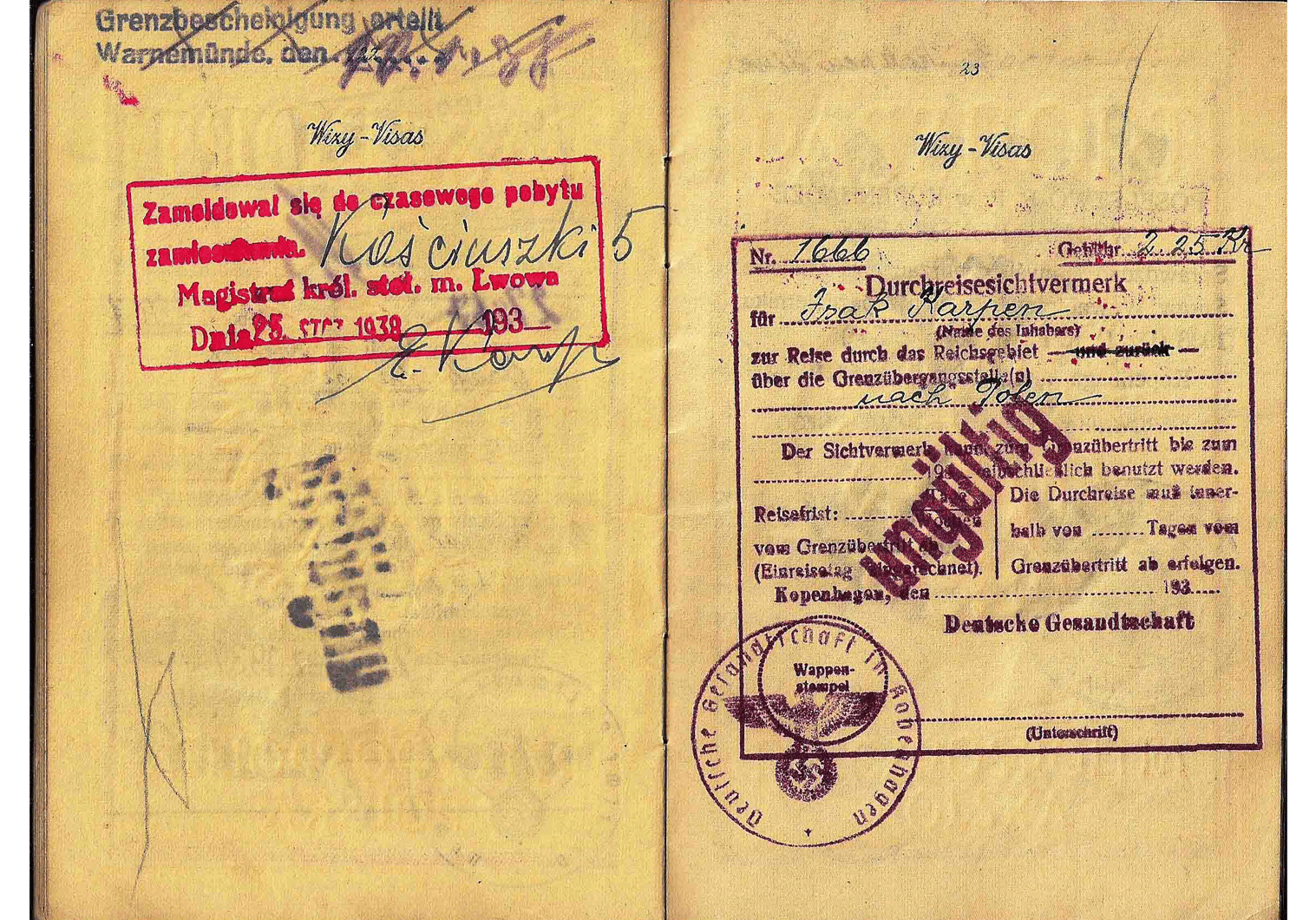
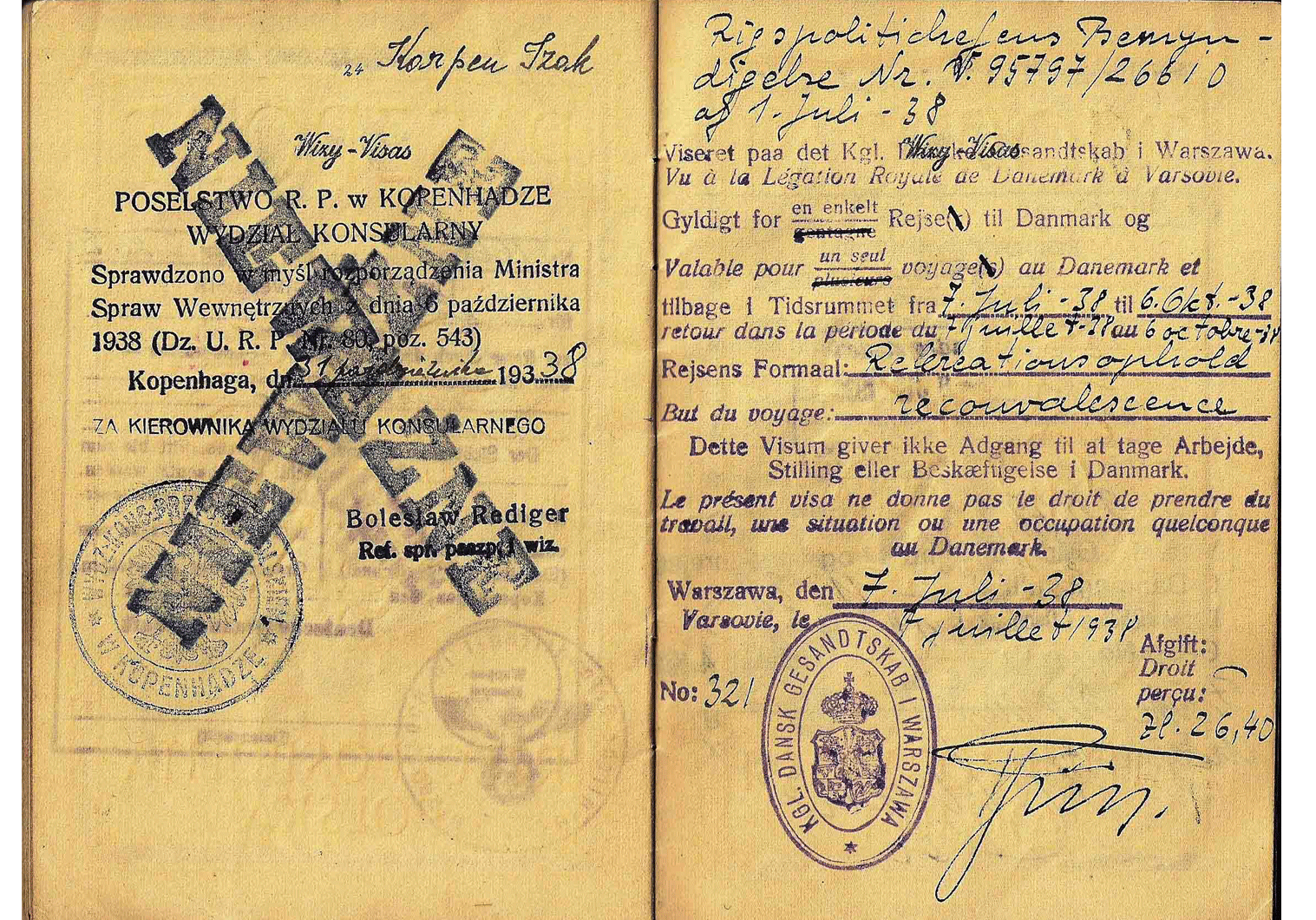


Hugh Page Taylor
Great website. Very interesting.
Do you have any identity documents of
Schalburgkorps
Germansk SS Danmark
DNSAP
SA?
Many thanks.